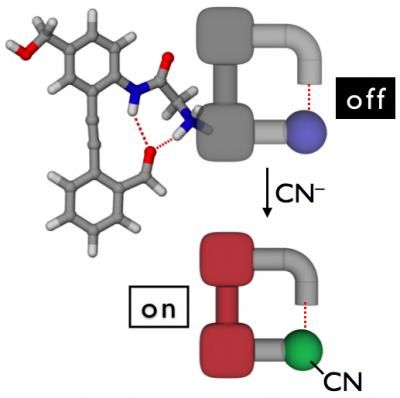Children’s toys must not cause allergies
BfR calls for stricter regulations for nickel and fragrances in toys
The Federal Institute for Risk Assessment (BfR) is of the opinion that toys containing metal alloys should only release minimal amounts of nickel. This would help to afford children better protection against contact allergies. Contact allergies are allergic skin reactions that are triggered by skin contact with a substance. Besides nickel, some fragrances can also cause contact allergies. BfR believes that these substances should not be detectable at all in toys intended for children under the age of three. This is because the earlier an individual has skin contact with allergenic substances in the course of his life, the higher the likelihood that he will become sensitised to and then go on to develop allergies to them. “So toys that children pick up every day with their hands should have to meet particularly stiff safety requirements in terms of their substance composition”, says Professor Dr. Dr. Andreas Hensel, President of BfR.
Nickel and fragrances rank amongst the most frequent contact allergens. When people come into contact with these substances, they may become sensitised and go on to develop allergic contact skin reactions. They range from reddening and blister formation over weeping down to severe inflammations and they are incurable. Only the symptoms can be treated.
In Europe around 10 percent of all children are sensitive to nickel and roughly two percent to fragrances. Sensitisation followed possibly by a contact allergy can only be prevented by avoiding contact between the skin and the allergenic substance. As nickel and fragrances are used in numerous products, contact cannot be completely avoided but should already be reduced to a minimum in the case of children. This is because sensitisation and a possible resulting contact allergy can seriously impair the child in later life, for example by limiting his choice of occupations.
BfR is of the opinion that the current regulations for nickel and fragrances in children’s toys are not sufficient to protect children from the risk of a contact allergy. At the present time there are no statutory provisions regarding children’s toys with nickel-containing metal components. BfR is of the opinion that the current values for nickel that may migrate from nickel-containing objects with lengthier skin contact like jewellery and metal trimmings in clothes should also apply to toys. Up to 0.5 microgram per square centimetre and week may be released from these objects.
The new EU toys directive contains provisions for fragrances in toys that allow for exemptions. For instance 55 known allergenic fragrances are banned; a further eleven must be labelled because of their allergenic potential. The banned fragrances may, however, be detectable in trace amounts of up to 100 milligram per kilogram toy material. According to BfR this limit is too high; these fragrances should not be detectable at all in toys. For fragrances that are subject to mandatory labelling, BfR recommends lowering the current declaration limit value from 100 milligram per kilogram toy material to 10 milligram per kilogram. Toys for children under the age of three should not contain any fragrances at all in the opinion of BfR.
Most read news
Organizations
Other news from the department politics & laws

Get the chemical industry in your inbox
By submitting this form you agree that LUMITOS AG will send you the newsletter(s) selected above by email. Your data will not be passed on to third parties. Your data will be stored and processed in accordance with our data protection regulations. LUMITOS may contact you by email for the purpose of advertising or market and opinion surveys. You can revoke your consent at any time without giving reasons to LUMITOS AG, Ernst-Augustin-Str. 2, 12489 Berlin, Germany or by e-mail at revoke@lumitos.com with effect for the future. In addition, each email contains a link to unsubscribe from the corresponding newsletter.
Most read news
More news from our other portals
Last viewed contents
New research by UCR physicists could help develop gamma ray lasers and produce fusion power - Researchers isolate collection of “pure” or spin polarized positronium atoms for the first time

Designer molecule detects tiny amounts of cyanide, then glows

Strang Kälte + Klimatechnik GmbH - Braunschweig, Germany
Dow Announces Global Price Increase for Vinyl Acetate Monomers effective September 1st





























































